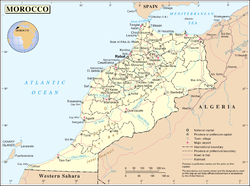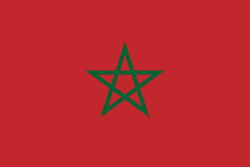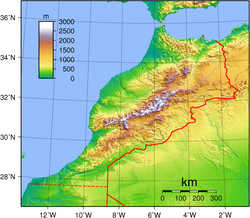

Morocco- sovereign country located in western North Africa. [1] Morocco has a coast on the Atlantic Ocean that reaches past the Strait of Gibraltar into the Mediterranean Sea. It has international borders with Algeria to the east, Spain to the north (a water border through the Strait and land borders with two small Spanish autonomous cities, Ceuta and Melilla), and a disputed border with Western Sahara to the south. [2]
Contents
- General reference
- Geography of Morocco
- Environment of Morocco
- Regions of Morocco
- Demography of Morocco
- Government and politics of Morocco
- Branches of the government of Morocco
- Foreign relations of Morocco
- Law and order in Morocco
- Military of Morocco
- Local government in Morocco
- History of Morocco
- Culture of Morocco
- Art in Morocco
- Sports in Morocco
- Royal Family of Morocco
- Economy and infrastructure of Morocco
- Education in Morocco
- Health in Morocco
- See also
- References
- External links
Morocco is an African country currently a member of the African Union. it is also a member of the Arab League at present, Arab Maghreb Union, the Francophonie, Organisation of Islamic Cooperation, Mediterranean Dialogue group, and Group of 77, and is a major non-NATO ally of the United States.
The following outline is provided as an overview of and topical guide to Morocco:




